Huge Films with Vision: Fingerprints Magnified
The world of cinema is filled with distinctive voices – filmmakers with trademark visual styles and subject matter. But with so many millions being spent on studio films, these creative voices are often watered down or worse, masked altogether by cautious or non-understanding executives. For example, while it may be a solid swords-and-sandals picture, Spartacus is a compromised effort and can’t hold a candle to Stanley Kubrick’s essential works. However, whether by a persistent filmmaker, an enabling producer, or any number of other factors, sometimes the vision remains (although the extent to which may vary). The type of big Hollywood cinema that is often looked down up with snobbery can actually be an excellent showcase for highly talented and original artists.
In honor of Pacific Rim, here are some expensive films from the last few decades that prove that high budget genre film-making need not be anonymous.
Pacific Rim (2013)
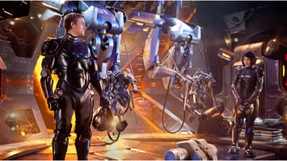 Director: Guillermo Del Toro
Director: Guillermo Del Toro
Budget: $180 million
While not Guillermo Del Toro’s first studio film in America (it’s preceded by Mimic, Blade II, Hellboy and Hellboy II: The Golden Army), this is by far the largest scale the Mexican-born Pan’s Labyrinth helmer has ever worked at, telling the story of a war between the Kaiju, monsters that rise from the ocean and attack major cities, and Jaegers, massive robots built by humans. While the trailers raised some concerns – it looked like it could be little more than a slightly-better Transformers – the film ended up being a massively thrilling and inventive experience. Del Toro’s love of creatures shines through very strongly through the Kaiju. Many little details, such as green jars of Kaiju parts, a squirmy Kaiju parasite and even the design of Ron Perlman’s shoes really solidify it as a Del Toro film, and a flashback sequence of a young girl hiding from a Kaiju calls to mind the way The Devil’s Backbone and Pan’s Labyrinth made childhood fear feel so real even in fantastical settings.
Scott Pilgrim vs. The World (2010)
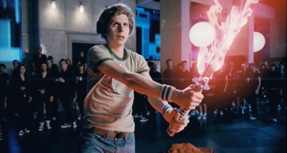 Director: Edgar Wright
Director: Edgar Wright
Budget: $85 million
Edgar Wright’s latest was not a success at the box office, but has already garnered a significant cult following. This comic book adaptation, about Scott, a teenage musician who has to battle his new love’s seven evil exes, is brimming with personality, and takes a fresh approach to action films and teen romance alike. Whereas many comedy films, even those with very funny dialogue and performances, are often visually flat and uninteresting, Edgar Wright infused his films Shaun of the Dead and Hot Fuzz, as well as his TV show Spaced, with visual pizazz. Using whip-pans, crash zooms and other cinematic techniques, he made the energetic style an integral part of the comedic storytelling. On Scott Pilgrim, he amped up the visual style with a colorful video game aesthetic assisted by The Matrix cinematographer Bill Pope. Scott Pilgrim manages to be an incredibly fun nonstop barrage of image and sound while rarely ever feeling overstuffed or unwieldy.
Batman Begins (2005)
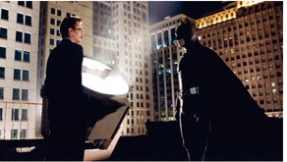 Director: Christopher Nolan
Director: Christopher Nolan
Budget: $150 million
After Joel Schumacher’s nightmarishly awful camp disaster Batman & Robin all but destroyed the Batman film franchise in 1997, Memento director Christopher Nolan breathed astonishingly new life into it with this grim, influential reboot that led to two epic sequels, 2008’s superior The Dark Knight and 2012’s divisive The Dark Knight Rises. Taking a cue from the more adult Batman comics of the 1980s, such as Frank Miller’s Batman: Year One, he created a gritty, serious and yet still operatic take on the character, further legitimized by a top-notch cast including Christian Bale, Liam Neeson, Michael Caine, Morgan Freeman and Gary Oldman. Like Leonard Shelby, the amnesiac protagonist of Memento searching for his wife’s killer, Bale’s Bruce Wayne, who as a child watched his parents gunned down by a mugger, is a tormented man who takes no pleasure in his work as he is motivated by tragedy and a sense of justice. In Insomnia, the 2002 English-language remake of the Swedish film of the same name, Nolan examined a very human evil in Robin Williams’ Walter Finch, and does the same in Begins with Tom Wilkinson’s ruthless mob boss Falcone, not the primary villain but certainly a key character. And of course, Nolan’s visual strength is in full force here, from the snowy Himalayas to the enveloping darkness of Gotham City.
Spider-Man 2 (2004)
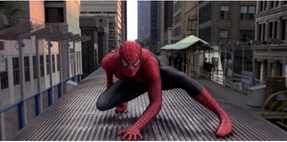 Director: Sam Raimi
Director: Sam Raimi
Budget: $200 million
Although this is the strongest of Raimi’s Spider-Man trilogy, his touch is felt a lot less here than in many of the others on the list. While Raimi did a knock-out job with this one, he disappears into it to an extent. However, there is one scene that is pure Raimi, and could not have been made by anybody else. After a demonstration of Dr. Otto Octavius’ mechanical appendages goes wrong, a group of surgeons attempt to remove them from his unconscious body. Following an ominous moment with a creaking harness, Raimi treats us to a minute of thrilling madness straight out of his Evil Dead films as the surgeons are killed by the robotic arms. Packing in crash zooms, shadows against the walls, fingernails dragging across the floor, a shot moving alongside a claw just like the flying eyeball in Evil Dead 2, and even a chainsaw, Ash’s weapon of choice in the classic horror trilogy, this sequence is a delight for fans and an incredibly memorable birth of a villain. In the larger sense, Spider-Man 2 combines the playfulness of the Evil Dead films (exciting set pieces abound, such as the bank fight that continues up along a skyscraper) with the compelling human drama seen in films like A Simple Plan (some of Peter Parker’s scenes with his Aunt May pack a real emotional punch).
Harry Potter and the Prisoner of Azkaban (2004)
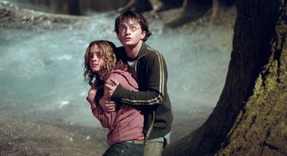 Director: Alfonso Cuarón
Director: Alfonso Cuarón
Budget: $130 million
While the first two adaptations of J.K. Rowling’s massively successful fantasy series are largely satisfying and faithful to the source material, Christopher Columbus brought them to life in a relatively pedestrian fashion. Cuarón, a Mexican-born filmmaker like Del Toro, made the third film into a quantum leap ahead of the first two, imbuing it with far more personality and creativity. A more sophisticated color palette, more inspired camerawork, a more textured design, and countless weird touches – a Jamaican-accented shrunken head, large toads singing along with the choir, the use of a jazz record during a Defense Against the Dark Arts magic lesson – elevate the film into truly visionary fantastical storytelling. In fact, Terry Gilliam, Rowling’s first choice for the first film, said this film was much closer to the way he would have approached it then the Columbus film. While this film is in many ways different than Cuarón’s acclaimed 2001 road trip film Y Tu Mamá También, he brings the same kind of authenticity of characters and their interaction to the teachers and students of Hogwarts, further involving the audience with them. Cuarón even manages to work in a small bit of handheld camera (something he uses to a much greater extent in Y Tu Mamá También and later on in Children of Men), which one would never expect from a Harry Potter film. By making the world of Potter darker, quirkier, more poetic and more human, Cuarón set the stage for Mike Newell and David Yates on the next five films in the series.
The Lord of the Rings Trilogy (2001-2003)
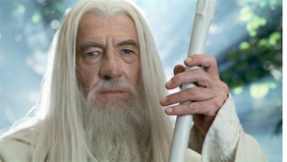 Director: Peter Jackson
Director: Peter Jackson
Budget: $280 million
Like Raimi on Spider-Man, Jackson largely steps aside in service of the story, but this incredibly ambitious and critically and commercially successful adaptation of J.R.R. Tolkien’s “unfilmable” classic novels would not have worked without him. His early low-budget ’80s and ’90s horror films Bad Taste and Braindead (aka Dead Alive) showed a passion for quality special effects, and the effects in the Lord of the Rings trilogy set new standards for creating worlds, with an excellent balance between practical and digital (a balance sadly lost on the mostly-CG 2012 prequel The Hobbit: An Unexpected Journey). Like he did in his hilariously filthy puppet comedy Meet the Feebles, Jackson brings non-human characters to glorious life, especially the Ring-corrupted Gollum, played by Andy Serkis, who completely holds his own alongside human actors. The trilogy also uses much of the same whooshing camerawork and Dutch angles that characterized his powerful drama Heavenly Creatures. But while there are elements of his previous work, Jackson rises to a whole new level with this trilogy, the peak of his filmmaking abilities. The Lord of the Rings is his absolute masterpiece, epic, emotional and unforgettable.
Mission: Impossible (1996)
 Director: Brian De Palma
Director: Brian De Palma
Budget: $80 million One of the New Hollywood “movie brats” alongside such filmmakers as Coppola, Scorsese, Spielberg, Lucas, Friedkin and Bogdanovich, De Palma is known for his stylish, stunningly crafted horror and thriller films such as Sisters, Carrie, Dressed to Kill and Blow Out. A huge admirer of Hitchcock, he used every trick in the book to create thrills and suspense, every single shot designed to create the greatest reaction in the viewer. Such a precision in form allowed the action set pieces in his super-fun espionage blockbuster Mission: Impossible (based on the TV show from the ’60s and ’70s) to totally engage. Tom Cruise’s Ethan Hunt suspended on wires to access a computer in a highly secure room is nearly unbearable in how tense it is, as De Palma intercuts with Jean Reno in the ventilation shaft above trying not to drop him as a rat crawls towards him (utilizing the split diopter technique, a favorite of the director’s, which keeps both a foreground object in one half of the frame and a background object in the other half in simultaneous focus). The final set piece involving a train and a helicopter is equally stunning. Such thoughtful staging and execution of tension and action scenes is sorely missed in the noisy, cluttered and sloppy set pieces of many current action films, and De Palma’s masterful direction should be studied by anyone attempting to make one. De Palma is also known for his love of excess (case in point: Tony Montana’s mountain of cocaine in Scarface) and he gets to indulge himself here, in scenes such as the restaurant explosion with a tidal wave of aquarium water bursting out the front of the building.
Batman Returns (1992)
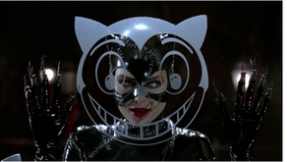 Director: Tim Burton
Director: Tim Burton
Budget: $80 million
One of the most imaginative and recognizable directorial styles of recent times is Tim Burton’s. His films are filled with an incredibly specific blend of macabre, whimsy and eccentric, often outsider characters, and of course many wonderful Danny Elfman scores. Although Burton’s first two features, Pee Wee’s Big Adventure and Beetlejuice, were hits, bringing him on to 1989’s Batman was still a risk, as he was untested with film-making of that scope. However, he delivered a grand, Gothic take on the material, and he was asked back for the sequel. While he was initially hesitant to return, he was granted a large amount of creative control and commissioned a rewrite from Heathers scribe Daniel Waters. Batman Returns is pure, untethered Burton (arguably a Burton film first and a Batman film second). Gotham became even more Gothic, a grimy, inky world informed by the German Expressionist films Burton so adores (such as The Cabinet of Dr. Caligari). While Michael Keaton is once again a fine Bruce Wayne (a classic Burton outsider), he is once again upstaged by the villains, the gruesome Penguin, played by Danny De Vito (even more of an outsider) and the incredibly sexy Catwoman, played by Michelle Pfeiffer. Despite a controversial tie-in with McDonald’s that made it seem family friendly, the film is violent and sexual, from Penguin biting the nose of a quipping campaign volunteer, causing blood to gush out, or Catwoman’s fetishistic, stitched-together leather suit. Burton allows nothing in the film to go untouched by his vision. One only need to look at Christopher Walken’s wacky white hairdo, henchmen dressed as skeletons and clowns, or the Penguin’s rubber ducky boat. The Christmastime setting serves to further distinguish this film from Batman ’89. Those who complain of Burton losing his edge should go back to his two Batman films, Edwards Scissorhands, Ed Wood, Big Fish and others to remember what a visionary he can be.
In conclusion, filmmakers with real style are what it takes to make quality tentpole films. Again and again millions and millions are spent on bland, unoriginal or downright offensive works, when this doesn’t have to be the case. With true talent behind the camera, and not interfered with except when necessary, big films can not only stand out and enrapture the masses with their personality, but stand the test of time as well.
What do you think? Leave a comment.











Great examples, I agree you can totally see each director’s stamp on these blockbusters, as opposed to a ‘hired gun’ like Brett Ratner. That scene in Spider-Man 2 is so amazing, easily my favorite scene in the movie. You can just tell Raimi had a blast filming it.
I agree with your conclusion but there are some great talent in the international scene and I would be happy if the execs would take risks with some of these talentws.
Well it seems that Hollywood is giving films to South Korean filmmakers, but I haven’t seen any of their English-language debuts yet. Del Toro and Cuaron transitioned quite well though.
I couldn’t agree with you more about Harry Potter and the Prisoner of Azkaban. Your analysis hits the nail on the head! Cuaron was the perfect director to oversee the transition from children’s fantasy to the dark and complex coming-of-age saga Rowling’s novels would become. As you say, Columbus’ offerings seem downright “pedestrian” by comparison. The last third of Azkaban may be the best passage of all of the film adaptations, combining Rowling’s storytelling flair with Cuaron’s unique aesthetic flavor and tonal sensibilities. He definitely left an undeniable stamp on the material, a feat that none of the other directors seemed to manage.
Its always been my favourite film and I could never really understand why. Well done Spencer!
Besides the Batman Returns selection, this is a detailed and insightful list. The best blockbusters, usually by people like Peter Jackson, Steven Spielberg and Guillermo del Toro, are smart enough to understand what audiences do and do not want. Their visions seem original and inventive because they venture outside the box and deliver more tangible, heartfelt adventure than their colleagues.